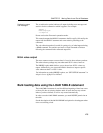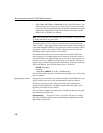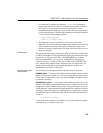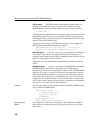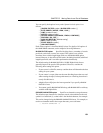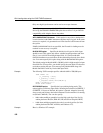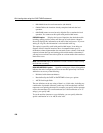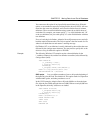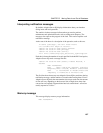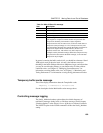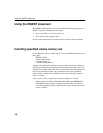
CHAPTER 5 Moving Data In and Out of Databases
183
LOAD TABLE nn
(l_orderkey,
l_quantity ASCII(PREFIX 2),
FILLER(2),
FROM ’C:\\iq\archive\\mill.txt’
BYTE ORDER LOW
LIMIT option Specifies the maximum number of rows to insert into the
table. The default is 0 for no limit.
LIMIT works together with the SKIP option. SKIP indicates where to begin
reading from the input file, and
LIMIT specifies how many of those rows to
insert.
SKIP takes precedence over LIMIT. If you specify multiple input files,
these options only affect the first file. The following table shows how these
options work together:
Table 5-1: SKIP and LIMIT insert options
Here is a Windows NT example. In this case, no rows are skipped, and up to
1,000,000 rows are inserted.
LOAD TABLE lineitem
(l_shipmode ASCII(15),
l_quantity ASCII(8),
FILLER(30))
FROM ’C:\\iq\archive\\mill.txt’
BLOCK FACTOR 1000
PREVIEW ON
LIMIT 1000000
NOTIFY option Specifies that you be notified with a message each time
the specified number of rows is inserted successfully into the table. The default
is every 100,000 rows. Very frequent notifications can slow down your insert
operation. To turn off
NOTIFY entirely, set NOTIFY = 0. See “Interpreting
notification messages” for an explanation of messages.
ON FILE ERROR option Specifies the action Adaptive Server IQ takes
when an input file cannot be opened, either because it does not exist or because
you have incorrect permissions to read the file. For all other reasons or errors,
it aborts the entire insertion. You can specify one of the following:
If the SKIP value is
And the LIMIT
value is Then IQ does this
0 5 Reads 5 rows and inserts 5 rows.
20 5 Reads 25 rows and inserts 5 rows.
10 5 Reads 10 rows and inserts 5 rows. If the input file
has only 8 rows, then zero rows are inserted.



